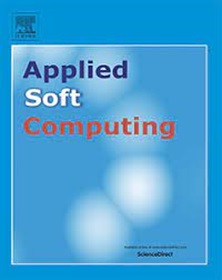Black-box adversarial examples via frequency distortion against fault diagnosis systems
IF 7.2
1区 计算机科学
Q1 COMPUTER SCIENCE, ARTIFICIAL INTELLIGENCE
引用次数: 0
Abstract
Deep learning has significantly impacted prognostic and health management, but its susceptibility to adversarial attacks raises security risks for fault diagnosis systems. Previous research on the adversarial robustness of these systems is limited by unrealistic assumptions about prior model knowledge, which is often unobtainable in the real world, and by a lack of integration of domain-specific knowledge, particularly frequency information crucial for identifying unique characteristics for machinery states. To address these limitations and enhance robustness assessments, we propose a novel adversarial attack method that exploits frequency distortion. Our approach corrupts both frequency components and waveforms of vibration signals from rotating machinery, enabling a more thorough evaluation of system vulnerability without requiring access to model information. Through extensive experiments on two bearing datasets, including a self-collected dataset, we demonstrate the effectiveness of the proposed method in generating malicious yet imperceptible examples that remarkably degrade model performance, even without access to model information. In realistic attack scenarios for fault diagnosis systems, our approach produces adversarial examples that mimic unique frequency components associated with the deceived machinery states, leading to average performance drops of approximately 13 and 19 percentage points higher than existing methods on the two datasets, respectively. These results reveal potential risks for deep learning models embedded in fault diagnosis systems, highlighting the need for enhanced robustness against adversarial attacks.
求助全文
约1分钟内获得全文
求助全文
来源期刊

Applied Soft Computing
工程技术-计算机:跨学科应用
CiteScore
15.80
自引率
6.90%
发文量
874
审稿时长
10.9 months
期刊介绍:
Applied Soft Computing is an international journal promoting an integrated view of soft computing to solve real life problems.The focus is to publish the highest quality research in application and convergence of the areas of Fuzzy Logic, Neural Networks, Evolutionary Computing, Rough Sets and other similar techniques to address real world complexities.
Applied Soft Computing is a rolling publication: articles are published as soon as the editor-in-chief has accepted them. Therefore, the web site will continuously be updated with new articles and the publication time will be short.
 求助内容:
求助内容: 应助结果提醒方式:
应助结果提醒方式:


